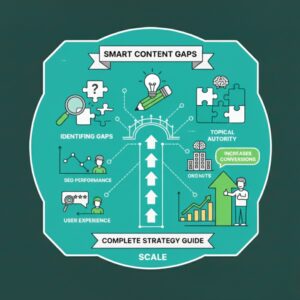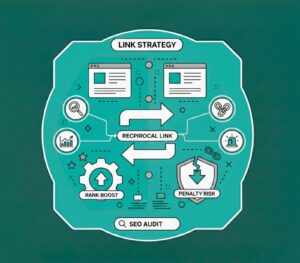Mastering AI Writing Tools: How to Create Smarter, Human-Centric AIO Content
Blogs | Category
Written By: Lauren Davison
Introduction
AI writing tools are now part of the writer’s toolkit. They speed up research, suggest fresh angles, and turn a thin idea into a workable draft fast. But raw output alone is not content; it is a starting point. The real work happens when people step in: edit, verify, and give the text a voice.
This post demonstrates how to utilise AI writing tools within an AIO approach, combining AI with human optimisation, to achieve both SEO gains and emotional resonance. You’ll learn practical steps, common pitfalls, and metrics that prove AIO content actually works.
Table of Contents
The Rise of AI Writing Tools in Modern Content Creation
Why Marketers Are Turning to AI for Content
Marketers use AI to lift repetitive tasks off their desks. Tools such as ChatGPT, Jasper, and Copy.ai speed up outlines, topic research, and headline tests, which saves hours. It also lets teams run more experiments. You can test tone variations, rewrite for different audiences, or generate meta descriptions in seconds. The payoff is time and scale. But speed without strategy produces forgettable text. That’s why AI-assisted writing must pair with a human strategy.
How AI Is Changing the Role of Writers
Writers aren’t obsolete. Their role has shifted. They now curate, check, and elevate. AI helps with ideation and structure; humans bring nuance and judgment. Think of it like a kitchen: AI preps the ingredients. People cook the meal. This human-AI collaboration keeps content authentic, defensible, and aligned with brand values.
Voice Search and Conversational AI
Voice search is mainstream now. A PwC survey discovered that 58% of UK shoppers use voice search to locate nearby businesses. AI links voice queries to local suggestions, so your business needs to optimise content for conversational types. “What is the best accountant in Birmingham?” is not typed the same way, and your content has to take note of that.
Understanding AIO — The Smart Way to Use AI for Writing
What Is AIO (AI + Human Optimisation)?
AIO means using AI writing tools as an assistant, not the author. Generate a draft with AI. Then edit for truth, tone, and originality. Add examples, quotes, and local context. AIO preserves the efficiency of machines while delivering the human elements that readers and search engines reward.
Benefits of AIO Content
- Consistency at scale without flattening voice.
- Faster turnaround for campaigns.
- Higher engagement because humans restore story and empathy.
- Better SEO when humans fine-tune keywords and intent.
Common Mistakes Writers Make with AI Tools
Publishing Without Human Editing
AI can hallucinate facts or make odd assertions. Publishing without checking invites embarrassment — and worse, legal risk. Always verify and cite.
Relying Too Much on AI-Generated Keywords
AI suggests keywords. Fine, but it also overuses them. Keyword stuffing kills readability and trust. Use AI for discovery; let humans choose placement and tone.
Losing the Brand’s Unique Voice
Generic AI text lacks personality. If you allow it to dominate, your brand’s voice fades. Humans must reclaim language that reflects values, culture, and audience nuance.
Best Practices for Using AI Writing Tools the Right Way
- Start with a Strong Content Strategy
Define goals first. Who is this for? What action should they take? Which queries are we answering? A clear brief shapes effective prompts and keeps AI work useful.
- Craft Clear and Detailed Prompts
AI output quality scales with prompt clarity. Include audience, tone, format, and key points. Small extra context produces leaps in usefulness.
- Edit, Optimize, and Humanize the Draft
Human editors do the heavy lifting: fix rhythm, inject anecdotes, localise examples, and prune repetition. That is where the piece becomes trustworthy and memorable.
- Verify Facts and Add Original Insights
Cross-check facts, add primary experience or customer quotes, and cite reputable sources. This is how you build E-E-A-T: show Experience, Expertise, Authoritativeness, and Trustworthiness.
Building an Effective AIO Workflow for Teams
Step-by-Step Process
A reliable AIO process prevents chaos:
- Research keywords and intent.
- Generate AI outlines and rough drafts.
- Human edit for voice, facts, and insight.
- Run SEO checks and plagiarism scans.
- Final QA and publish.
This sequence preserves speed and adds human judgment at decisive moments.
Collaboration Tools for AIO Writing
Use tools that complement the workflow:
- Grammarly for tone and grammar.
- SurferSEO for topical alignment and keyword intent.
- Notion or Google Docs for drafts and version control.
- Trello or Asana for task flow.
- ChatGPT or specialist models for ideation.
Pick tools that the team will actually use, not the ones you think look impressive.
Evaluating the Success of AI-Driven Content
Key Metrics to Track
Measure both search and human response:
- Engagement rate and time on page.
- Clickthroughs from SERPs.
- Conversion or goal completions.
- Readability scores (aim below 10 on Hemingway).
- AI detection results are relevant to policy or platform requirements.
These metrics tell if your AIO content is discoverable and felt as valuable.
Continually Improving Your AI Prompts
Treat prompts like experiments. Track what works and iterate. Over time, your prompts will generate drafts that need less heavy editing. That is the leverage you want.
Semantic Depth and Ethical AI Content Creation
Using AI well is not only tactical. It’s ethical. That means:
- Be transparent about AI use when required.
- Avoid fabricating sources or quotes.
- Respect privacy and copyright.
- Use diverse training data and guard against bias.
Ethical practices build trust and reinforce E-E-A-T. They also align with MUVERA: make content Meaningful, Useful, Verifiable, Ethical, Reliable, and Actionable. If your content fails any MUVERA test, fix it before publishing.
Real Examples: Using AI for SEO Writing Without Sacrificing Quality
Say you target “AI content optimisation.” Use AI to generate topic clusters and meta ideas. Let human editors:
- Merge clusters into a logical outline,
- Add regional examples and customer stories,
- Insert verified stats and link to authoritative sources.
This approach gives search engines context and readers something to act on.
Practical Tips to Reduce AI-Detector Signals
Mix sentence lengths. Add short, punchy statements. Drop in human asides or specific local references. Don’t repeat the same phrase patterns. Use unpredictable word choices where they fit. These simple moves increase “perplexity” and make content feel written by a human mind, which is exactly the point.
Conclusion
AI writing tools are powerful. They speed up work and expand creative options. Yet they are not the authors of trust. The pages people remember and the pages that perform are those where machines help and humans lead. Use AI writing tools to draft, test, and scale. Then apply human judgment to verify, human voice to convince, and human ethics to stand behind your words. That combination is AIO. It wins both attention and trust.
At Midland Marketing, we take your content to the next level. We use AIO techniques that merge AI precision with genuine human insight.
Talk to us today to build a strong AIO-driven content plan.
Frequently Asked Questions
- What are AI writing tools used for?
They assist with ideation, drafting, and rewriting. Use them to speed research, create outlines, and generate multiple versions for testing.
- What does AIO content mean?
AIO stands for AI plus human optimisation. It means AI drafts are always edited by humans for accuracy, tone, and originality.
- Can AI replace content writers?
No. AI augments writers. Humans bring judgment, emotional insight, and domain expertise that machines cannot replicate.

Written by - Lauren Davison
Introducing Lauren – one of our content writers who has a flair for SEO and creative strategy!
With a Master’s Degree in Creative Writing, Lauren has niched down into SEO and content writing.
Outside of work, she loves watching the darts, reading and the pub on the weekend.
Want some more?
Latest Insights & News

Revolutionising Marketing: The Rise of Situational Content Strategies
Situational content strategies involve tailoring content to specific moments, contexts, or audience behaviours. By aligning content with real-time trends, seasonal needs, and user intent, brands can increase relevance, improve engagement, and strengthen SEO performance.

Smart Ways to Identify and Fill Content Gaps Fast: A Complete Strategy Guide
Content gaps refer to missing information, unanswered questions, or underserved topics in your existing content. Identifying these gaps helps you create targeted, high-value pages that improve search visibility, satisfy user intent, and outperform competitors.

Reciprocal Links in SEO: Do They Still Boost Rankings or Risk Penalties?
For the keyword “reciprocal links SEO,” focus on explaining how reciprocal linking works today. Reciprocal links are not harmful by default, but Google can flag excessive or manipulative link exchanges. To stay safe, only exchange links when they are contextually relevant, natural, and valuable to users.




